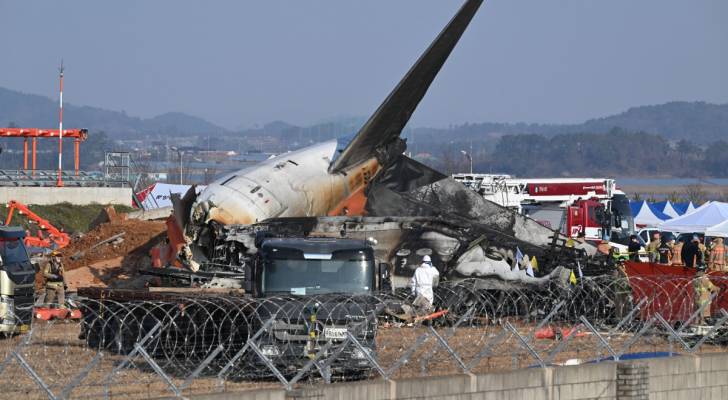The wreckage of a Jeju Air Boeing 737-800 series aircraft (Credit: AFP)
VIDEO: Deadly plane crash in South Korea leaves 120 dead, 59 missing
A passenger plane crash in South Korea, involving a Jeju Air flight carrying 181 people, has prompted authorities to launch an investigation into the incident, which occurred as the aircraft attempted to land at Muan International Airport.
Fire authorities retrieved 120 bodies from the crash site, with 59 individuals still unaccounted for, according to South Korea’s national fire agency. The confirmed fatalities include 54 men, 57 women, and nine victims whose gender has yet to be identified.
According to South Korea’s Yonhap News Agency, the plane, arriving from Thailand, collided with a wall at the airport during its landing attempt.
- Possible causes under investigation -
Technical Malfunction: Initial reports suggest the plane may have tried to land without deploying its landing gear due to a technical failure.
Bird Strike: Authorities have also warned that a bird strike, coupled with poor weather conditions, is possible.
At a press briefing, Lee Jeong-hyun, chief of Muan fire station, stated that preliminary findings indicate bird strikes and adverse weather could be contributing factors. “The final cause will only be confirmed after thorough investigations,” he said.
South Korean media broadcast footage showing the plane’s right engine exploding mid-air shortly before landing. Reports link the explosion to a potential bird strike.
An official at the scene revealed that the aircraft, attempting to land without its wheels, failed to reduce speed and collided with a structure at the runway’s end. The impact caused extensive damage and ignited a fire.
- Bird strikes: A growing aviation threat -
Bird strikes remain a significant risk to aviation safety, often occurring during takeoff or landing when aircraft are at lower altitudes. According to a U.S. Fish and Wildlife Service report, large birds, such as waterfowl, gulls, and raptors, account for 75 percent of incidents.
These collisions can cause severe damage, including engine failure or structural compromises, posing a major threat to flight safety.




